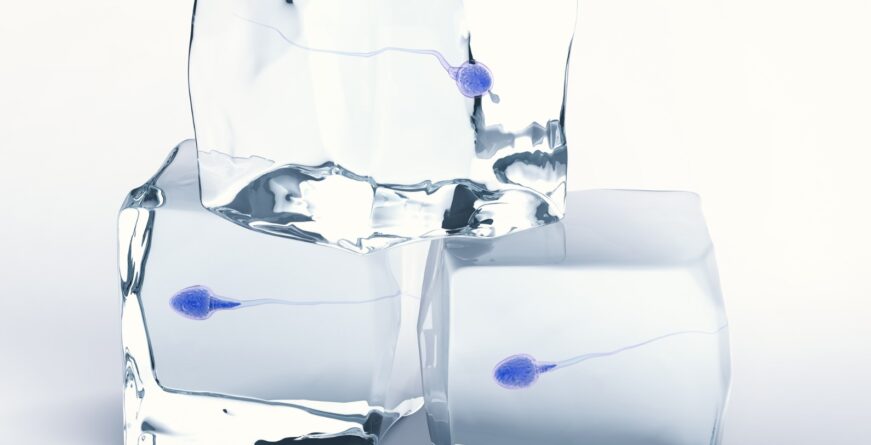When performing an Extended Sperm Search and Microfreeze procedure, sperm are collected using a modification of the techniques used during an ICSI (Intracytoplasmic sperm injection) procedure. In ICSI, a micropipette- a needle thinner than a human hair- is used to draw up a single sperm and inject it into an egg. The primary criteria used to choose that single sperm is: swimming capability. How exactly do we catch a moving target? First, the sperm as placed in a media called PVP. This is a viscous gel-like substance that slows the sperm down. Imagine trying to swim through jello! When the target sperm has been identified, the micropipette is used to immobilize it. An ICSI pipette, sometimes called an ICSI needle, has a sharp pointed tip and is used to slash and break the sperm tail. This has been shown to increase fertilization rates by making the sperm cell membrane permeable. But practically, the immobilized sperm can now easily be drawn up into the pipette for injection.
For microfreezing, things have to be done a little differently. Sperm must be cryopreserved with their tails intact. Swimming after thawing is the easiest way to know that they survived. PVP is also used sparingly- if you put a weak swimmer into jello, it may not be able to swim at all. Most often, microfreezing is performed with poorer quality, slower moving sperm. However, every once in a while, a good strong swimmer will zip through the thin media and lead us on a merry chase across the petri dish. It’s like trying to catch a wriggling fish with a straw. Or playing Hungry Hungry Hippo with sprinkles. Good problems to have, but uniquely challenging nonetheless!
If you’d like to learn more about this, or other infertility treatments, please contact us for a free phone consultation.


